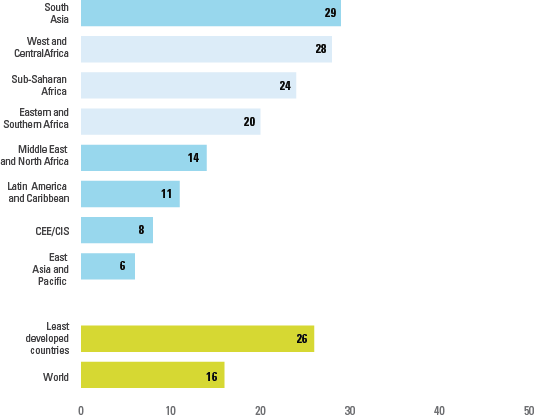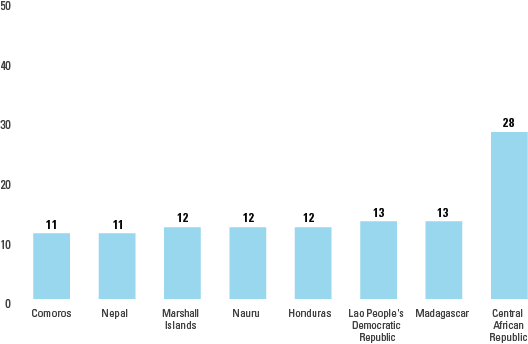Marriage before the age of 18 is a fundamental violation of human rights. Yet among women aged 20 to 24 worldwide, about one in four were child brides. Many factors interact to place a girl at risk of marriage, including poverty, the perception that marriage will provide ‘protection’, family honour, social norms, customary or religious laws that condone the practice, an inadequate legislative framework and the state of a country's civil registration system. Child marriage often compromises a girl’s development by resulting in early pregnancy and social isolation, interrupting her schooling, limiting her opportunities for career and vocational advancement and placing her at increased risk of domestic violence. Child marriage also affects boys, but to a lesser degree than girls.
DATA SOURCES
The term ‘child marriage’ is used to refer to both formal marriages and informal unions in which a girl or boy lives with a partner as if married before the age of 18. An informal union is one in which a couple live together for some time, intending to have a lasting relationship, but do not have a formal civil or religious ceremony. The main sources of such data are national censuses and national household surveys, predominantly the Multiple Indicator Cluster Surveys (MICS) and Demographic and Health Surveys (DHS).
MAIN INDICATORS
In 2003, UNICEF and partners agreed to focus on five indicators related to child marriage:
- Percentage of women 20 to 49 first married or in union by age 15 and 18, by age group
- Percentage of girls 15 to 19 years of age currently married or in union
- Spousal age difference
- Percentage of women currently in a polygynous union, by age groups
- Percentage of ever-married women who were directly involved in the choice of their first husband or partner.
Many countries also collect data on the marital status and age at first marriage for boys and men, thereby allowing a comparison of gender differentials related to child marriage.
INTERPRETING THE DATA
The context and indicators related to child marriage and cohabitation can be approached through the examination of age groups. One approach is to consider all women in a society. Another would be to observe the situation of girls aged 15 to 19 to determine the number of girls currently married or in union and the characteristics associated with that age group. However, gauging how many of those girls will be married or in union by their 18th birthday is more complex because many have not yet reached the age of 18. Looking at the group of women 20 to 24 years old is simpler and allows for the inclusion of all girls who were married or in union by age 18 within the closest time period for which complete data are available.
MICS MODULE ON CHILD MARRIAGE
MICS surveys have standardized modules on marriage for men and for women
Download the MICS module on marriage for women (PDF)
Download the MICS module on marriage for men (PDF)






